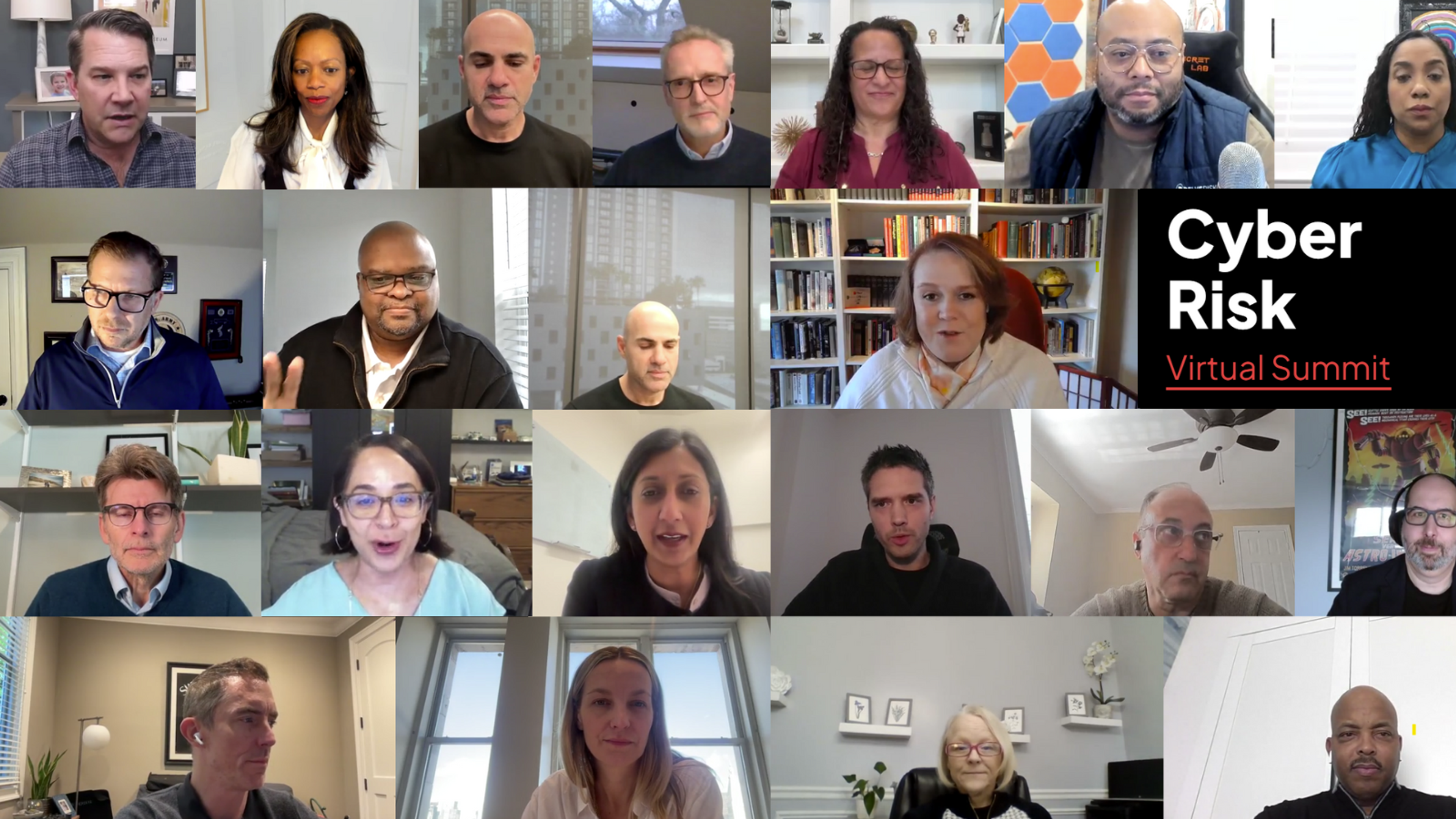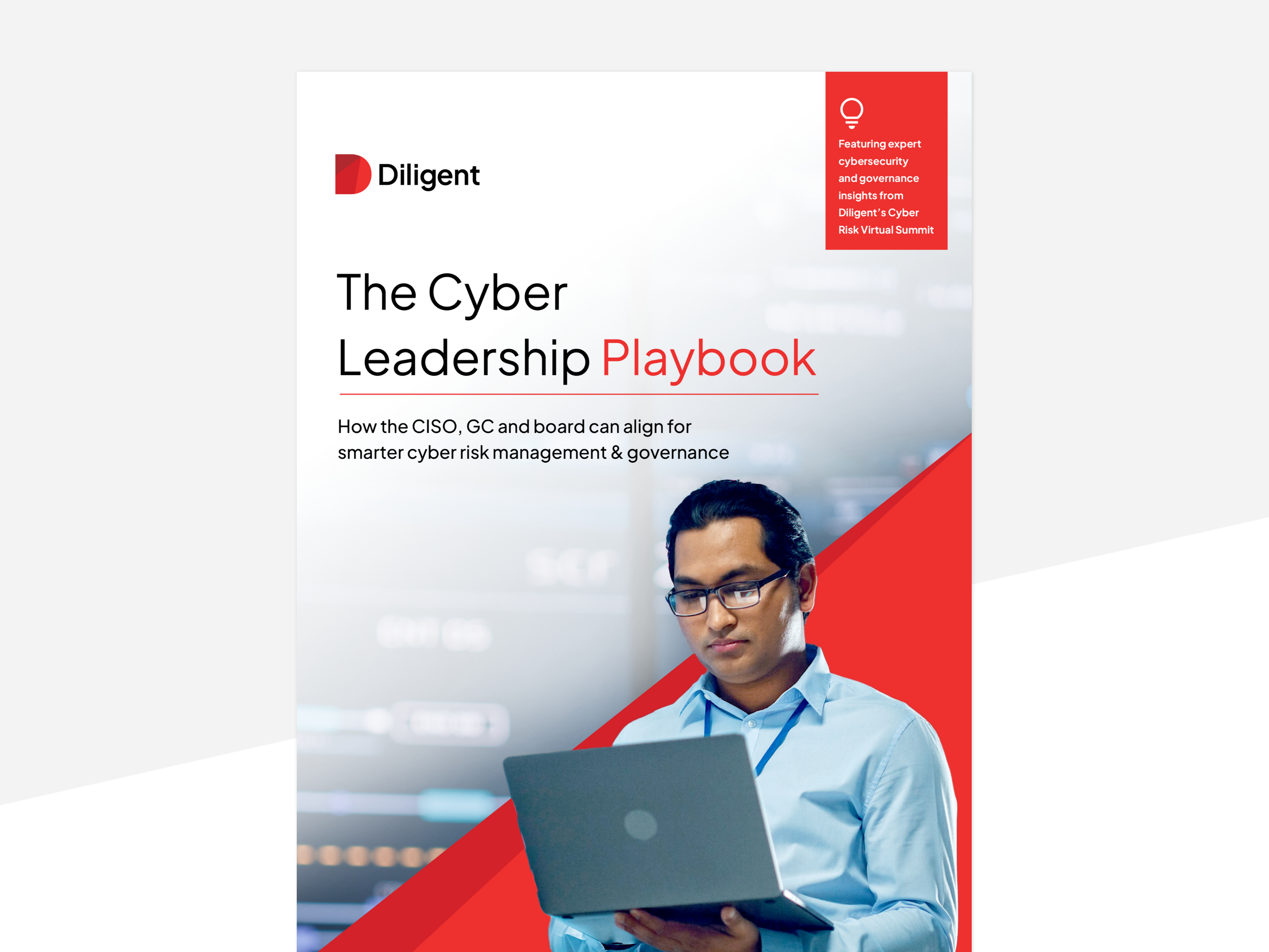Outsmarting cyber risk: An exclusive look at the future of cybersecurity

The Diligent Cyber Risk Virtual Summit brought together global thought leaders in cybersecurity, risk management and governance. The discussions highlighted critical areas requiring immediate attention, including gaps in real-time visibility, limited board-level understanding of cyber risk, emerging threats like AI-driven attacks and the complexities of regulatory compliance.
During the event we gathered insights from leaders and cyber risk professionals across the globe to explore the future of cybersecurity and how to effectively communicate cyber risk to the board. With over 3,300 responses to our poll questions during the event, here’s what we uncovered:
Key insights from the Diligent Cyber Risk Virtual Summit
Visibility gaps in real-time cyber exposure
One of the prominent issues highlighted was the lack of real-time visibility into an organization’s cyber risk exposure. Many organizations rely on periodic risk assessments, leaving them unprepared to respond to fast-evolving threats. This lack of visibility often results in blind spots, increasing the likelihood of successful cyberattacks.
Experts at the summit stressed the importance of adopting advanced monitoring tools and platforms that provide continuous insights into an organization's risk profile. By integrating real-time data feeds and leveraging threat intelligence, organizations can proactively identify vulnerabilities and prioritize mitigation efforts.
Limited board understanding of cyber risk posture
Another key challenge identified was the disconnect between boards of directors and cybersecurity teams. Many board members lack a deep understanding of their organization’s cyber risk posture, which hinders their ability to provide effective oversight.
To bridge this gap, panelists recommended fostering stronger collaboration between cybersecurity teams and the board. Regularly scheduled briefings, simplified reporting dashboards, and ongoing education initiatives can help board members better grasp the significance of cyber risks and make more informed decisions. Cybersecurity must be viewed not only as a technical concern but as a critical component of overall business strategy.
Emerging threat: AI-driven cyberattacks
The summit shed light on the rising threat of AI-powered cyberattacks. As artificial intelligence continues to advance, malicious actors are increasingly using AI tools to enhance the sophistication and scale of their attacks. For instance, AI can be used to automate phishing campaigns, bypass traditional security measures, and exploit vulnerabilities at an unprecedented pace.
Organizations must stay ahead of this evolving threat by incorporating AI into their own cybersecurity defenses. Deploying AI-based threat detection systems, enhancing predictive analytics, and investing in workforce training on AI-related risks are crucial steps in preparing for this new wave of attacks.
Compliance challenges in cybersecurity
The complexity of regulatory landscapes poses another significant challenge for organizations. With differing cybersecurity regulations across industries and regions, staying compliant is a demanding task that often diverts resources from core security functions.
Speakers emphasized the need for streamlined compliance processes and greater alignment between regulatory requirements and organizational goals. Utilizing governance, risk, and compliance (GRC) platforms can help organizations manage overlapping regulations more effectively while ensuring that compliance efforts contribute to broader risk mitigation strategies.
Download the PDF version of our infographic, here.

Recommendations for enhanced cyber risk management
Based on our poll's findings, here are some actionable tips for a better cyber risk management strategy:
- Strengthen communication across stakeholders: Foster open dialogue between technical teams, executives, and the board to ensure a unified approach to cybersecurity.
- Invest in advanced technologies: Leverage tools such as real-time risk monitoring platforms, AI-driven threat detection systems, and automated compliance management solutions.
- Prioritize cyber education: Provide ongoing training for board members, employees, and technical teams to build a culture of cybersecurity awareness.
- Adopt a proactive approach: Shift from reactive strategies to proactive risk management by using predictive analytics and scenario-based planning.
- Align cybersecurity with business goals: Treat cybersecurity as a strategic priority that directly supports business continuity and resilience.
Collaborate for better cyber risk management and governance
The Diligent Cyber Risk Virtual Summit underscored the urgent need for organizations to enhance their cyber risk management and governance practices. From addressing visibility gaps and fostering board-level understanding to preparing for emerging threats and simplifying compliance, the event provided actionable insights to strengthen organizational resilience.
Take the next step and download our Cyber Leadership Playbook. This practical guide provides a clear, actionable plan for CISOs, general counsels and board members to work together more effectively, enhance cyber risk management, and incorporate security into strategic decisions.
Keep exploring

How to choose the right ITRM software
Learn how to evaluate ITRM software based on functionality, security, compliance & cost. Make confident, future-proof decisions. Download now.

The top 20 expert quotes from the Cyber Risk Virtual Summit
Explore top insights from the Cyber Risk Virtual Summit — expert quotes on CISO-GC-Board collaboration, compliance and AI-driven cyber threats.

The Cyber Leadership Playbook
Discover how CISOs, GCs & board leaders can align priorities, communicate risk clearly & use GRC tech to lead smarter, more resilient cyber governance.